Demos
Music Education
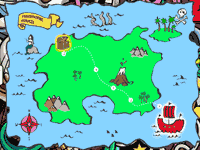 |
Harmonic Touch
Contact: ▸Luca A. Ludovico |
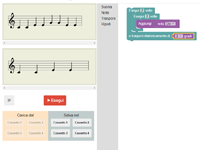 |
Music Blockly Release date: 2017 (prototype) This web application explores the possibilities that may emerge when coding activities are coupled to music education. The prototype is based on Google Blockly, a visual code editor that uses interlocking, graphical blocks to represent code concepts like variables, logical expressions, loops, and more. The goal of students is to correctly reproduce a given music tune by using the available blocks, which represent music operators. Being based on the novel technology known as the Web MIDI API, at the moment of writing this application runs only under Google Chrome and it requires the availability of either a software (virtual) or a hardware (physical) MIDI-compatible sound module. Bibliography
Contact: ▸Luca A. Ludovico |
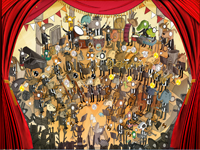 |
MusiCLILy Release date: 2016 MusiCLILy is a web platform for CLIL (Content and Language Integrated Learning) educational contents for children. Inside the platform there are trans-disciplinary lessons (music and foreign language, science and foreign language, etc.). Multimedia technologies allow to experience multiple and integrated audio, graphical and textual representations, fostering not only bilingualism but also multilingualism. Bibliography
Contact: ▸Luca A. Ludovico |
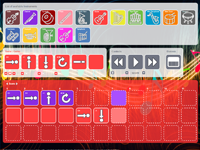 |
Music Coding Release date: 2015 This early experiment is meant to illustrate the potential of a coding-oriented approach to music analysis and composition. The interface allows to input score symbols (i.e. notes and rests) through ad-hoc music operators. The user can select different musical instruments for his/her score. Being based on the novel technology known as the Web MIDI API, at the moment of writing this application runs only under Google Chrome and it requires the availability of either a software (virtual) or a hardware (physical) MIDI-compatible sound module. Bibliography
Contact: ▸Luca A. Ludovico |
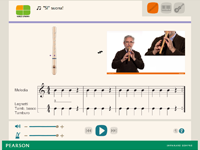 |
Pearson Videostudio Release date: 2014 Videostudio is the multimedia attachment to the textbooks for music education published by Pearson addressing students of the secondary school level. Based on web technologies and on the adoption of the IEEE 1599 standard, Videostudio is a teaching aid that displays the score, the video of the performance by an expert and the animation of the musical instrument execution all synchronized with the audio track of the current piece, including an interactive score-following function to show the progress of the performance. Three musical instruments are supported: guitar, flute and keyboard. Bibliography
Contact: ▸Luca A. Ludovico |
| Laboratorio di Informatica Musicale | |||||
| Dipartimento di Informatica Università degli Studi di Milano Via G. Celoria 18, 20133 Milano, ITALY |
Goffredo Haus, director Phone: +39 02 50316 222 E-mail: goffredo.haus@unimi.it |
Luca A. Ludovico, technical contact Phone: +39 02 50316 382 E-mail: luca.ludovico@unimi.it |
Laboratory Phone: +39 02 50316 382 E-mail: lim@di.unimi.it | ||

